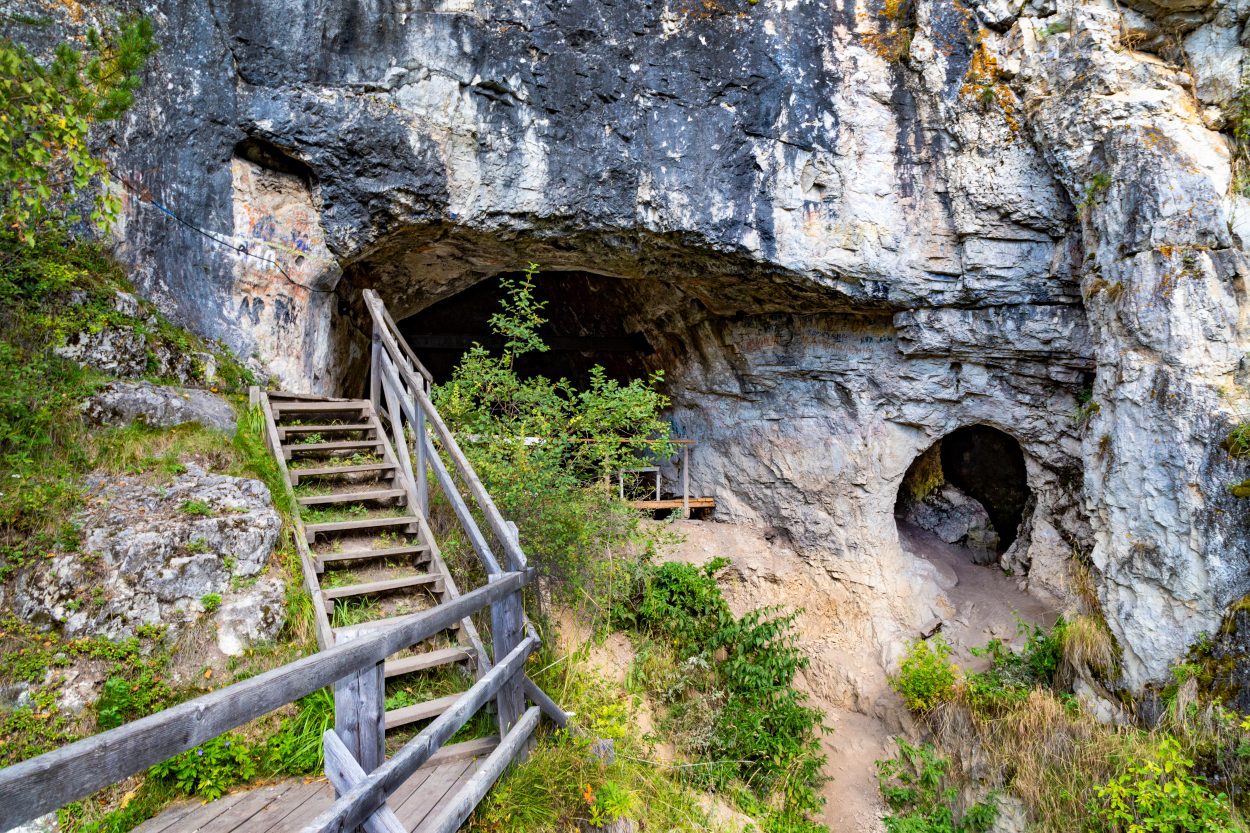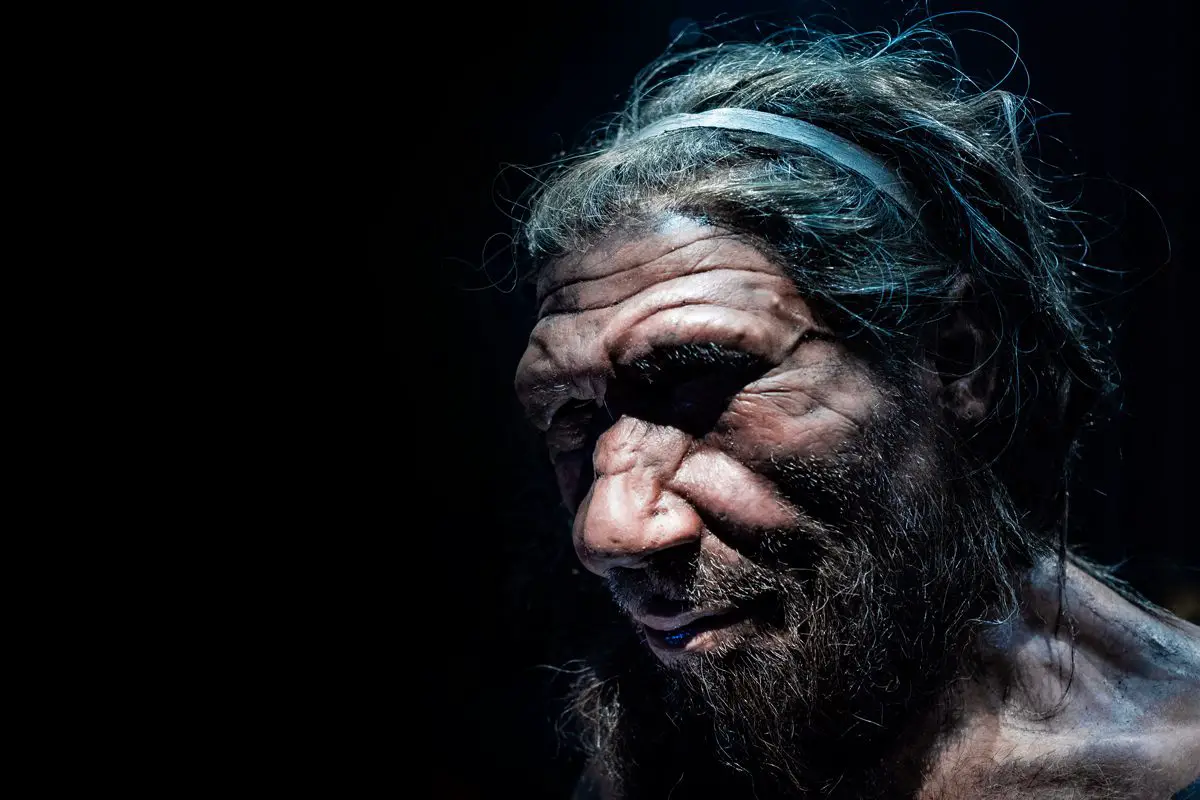Neanderthals (Homo neanderthalensis) first roamed Europe and Western Asia nearly 430,000 years ago, until their disappearance around 40,000 years ago, only 5,000 years after the arrival of Homo sapiens (early modern humans).
Anatomically, Neanderthals were well suited to the cold and dry climate of Northern Europe. Short and stocky (males averaged 5’5 and females 5’1), they had broad chest cavities, and along with broad noses and large nasal chambers, dry or cold air was moistened and warmed as it entered the body, allowing for easier habitation in the colder climates.
It is unclear whether Neanderthals were the first to create fire, but they almost certainly used it. Calcined bone from excessive burning during cooking, charcoal hearths, fire-stained stone and charred and butchered animal bones, have all been discovered at many known Neanderthal sites in Europe and Western Asia.
Neanderthals evolved to have much larger brains than earlier archaic humans, and in some cases had similar or even larger brains than modern humans. This large cranial capacity enabled them to manufacture tools and decorative items, or make clothing, weapons and shelters. Neanderthal brains were also more oblong shaped than the rounder brains of modern humans, with a much larger portion of brain activity being dedicated to visual acuity and ocular function.
Eye sockets were more rounded than the squared sockets of modern humans, with an Oxford University study of Neanderthal skulls stating that “their large eyes were to blame for their extinction, as their brains were adapted to allow them to see better and maintain larger bodies at the expense of high-level processing and intelligence.”
The evolution of the Neanderthal brain paved the way for the adaptation of a distinct Neanderthal culture, as studies of Neanderthals burial sites suggests that they were the first to bury their dead and adorn the graves with flowers. With the deliberate and ritualistic burials, it is not unreasonable to assume they may have believed in an afterlife, deity or spirit, in which to entrust their loved ones after death.
Art, in any form, is also indicative of a cultural species. Neanderthals created artistic objects such as bone jewellery, but may have also been the first cave artists. Paintings on the walls of El Castillo Cave in Spain are adorned with handprint stencils made with red ocre and abstract signs. Studies in the cave suggest that the cave art is 40,800 years old – making it the earliest-known cave art and possibly the work of Neanderthals. Other discoveries, such as Gorham’s Cave in Gibraltar, contains a carved rock that pre-dates the arrival of modern humans, suggesting that Homo sapiens and Neanderthals both created cave art.

In 2008, a previously unknown species of early human was discovered in the Denisova Cave in Siberia. Sharing a common ancestor of both anatomically modern humans and Neanderthals, the newly discovered Homo denisovans (76-52kya) is more closely related to Neanderthals. Studies of modern humans suggest that people from Europe and Asia have around 1-2% of Neanderthal DNA (Sub-Saharan Africans have none), indicating that interbreeding occurred during the short 5,000 years of coexistence.
Additionally, Denisovan DNA is found in modern human groups, such as: Aboriginal Australians, Fijians, East Indonesians, Polynesians and other Oceanic groups, suggesting that the Denisovans inhabited these areas and also interbred with the emerging modern humans.
There is also evidence of a first-generation hybrid of a Neanderthal and Denisovan mating. Excavations in the Denisova Cave found a long bone from a young girl, in which studies of the Mitochondrial DNA (DNA from the mother) indicates that the deceased had a Neanderthal mother and a Denisovan father.
There are many theories as to what caused the demise of Neanderthals and Denisovans. Conflicts with modern humans is certainly a possibility, as Neanderthals were unable to keep up with the more sophisticated weapons and hunting strategies.
Another theory suggests that modern humans introduced foreign diseases that the earlier humans had no protection against, however, a more plausible theory focuses on the interbreeding between the different species of humans, with the much larger modern human population interbreeding the smaller populations into extinction.
Written by Julie St Jean
Header Image Credit : Shutterstock (Under Copyright)





